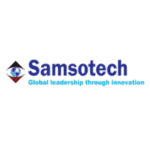 How should we measure tourism satisfaction for businesses and destinations? And what key factors should we consider when consuming tourism indices?
How should we measure tourism satisfaction for businesses and destinations? And what key factors should we consider when consuming tourism indices?
These questions and more were covered at EHL’s 3rd Annual Hospitality Finance & Economics Research Conference, with keynote speaker Dr. Gang Li.
As a hospitality business leader, or destination management professional, what do you need to know about tourism? Does it help you to know where tourists go most and how much money that adds to the economy? Maybe so, but the most important factors for your business are what pleases tourists the most and what makes them grow your business as satisfied customers.
The steady growth of tourism reflects an important evolution in human economic and leisure activities and this is how it is currently measured: “It is one of the world’s largest and fastest-growing economic sectors, supporting one in 10 jobs (319 million) worldwide and generating 10.4% of world GD.” (WTTC 2019)
The industry collects data about the economic contribution, numbers of arrivals, jobs created and the popularity of destinations. Even with online travel review sites, such as TripAdvisor, nobody is really measuring tourist happiness and the impact of tourism on well-being, yet these are the insights that would help hospitality businesses and destinations to perform better in the future.
These issues were addressed by keynote speaker Dr. Gang Li at EHL’s 3rd Annual Hospitality Finance & Economics Research Conference. Dr. Gang Li is a Professor of Tourism and Economics at the University of Surrey (UK) where he is also the Director of International Relations for the School of Hospitality and Tourism Management, and the Lead of the Competitiveness of the Visitor Economy research group in the school. He devised an index system for measuring tourism satisfaction and the impact on tourists’ well-being, and the results of this research could be very useful for shaping tourism experiences.
An index for tourism satisfaction and well-being, by Dr. Gang Li
Dr. Gang Li began building his index to determine how to best measure tourism satisfaction, and whether or not tourism is good for people. As he pointed out, the pursuit of happiness is a major focus of people’s lives and also of indices, these days. Indeed, Switzerland owes its popularity in part to its frequent rating among the happiest countries in the world. So, if tourists are seeking happiness, then their happiness – not just the amount of money they spent, or the places they went – should be the measure to shape the future of tourism.
Measuring tourism satisfaction is important for several reasons, outlined in Dr. Li’s presentation:
- Satisfied tourists stay longer, spend more and come back
- They promote the provider on social media and online ratings, thereby contributing to business and destination competitiveness
- They bring friends and family on their next visit
- Satisfaction with vacation time impacts their overall quality of life
- Tourism is about consuming an unknown product in unfamiliar surroundings, and is classified as an “export” in economic terms
How to measure tourism satisfaction
In order to correctly measure tourism satisfaction, Dr. Li considered many factors which could be evaluated by collecting the responses of tourists after their experience, using questionnaires or interviews. Some of the key elements were:
- Expectations versus reality: subjects must be asked what they expected and how that expectation was met or not
- Satisfaction must be measured for every part of the experience: Transportation, Immigration, Accommodation, Food & Beverage, Feature Experiences
- The data must include personal factors such as age and gender
- Capturing the data must be done quickly at the end of the experience, as a feeling of satisfaction or an intention to log a complaint may fade with time
As Dr. Li explained, “Destination Management Organizations, tour operators and amusement parks may be interested in this data because if we can identify what makes a tourist have a good experience, then they can direct their energy to improve the most important aspects for tourists and thereby improve the overall reputation of the destination or provider.”
Four keys to a happy tourist
Using these methods to evaluate a tourism experience in South Africa, Dr. Li came to some conclusions about the results:
- High-cost experiences generally equal less happiness because the product does not seem to be worth the cost
- High-quality experiences make people happy and often feature interactive and interpersonal experiences, sensory experiences (touch, taste, smell, etc.) and humorous, fun or exciting activities and people (guides, staff)
- Any disagreement or complaint makes a negative overall impact, so providers must be on the lookout for signs of dissatisfaction and identify and correct problem areas in their service or product
- Good tourism experiences create well-being that spills over into other areas of life. Therefore, it is not unfair to market tourism as something that changes and shapes one’s life, but the experience has to live up to the expectations
In the end, the index system is a first experiment in measuring tourism satisfaction, and this study creates a solid framework for further work. These findings give a good idea of where the emphasis should go for measuring satisfaction for destinations and tourism-facing business, such as a tourism agency or tour provider. It also leaves a lot of room for further development, and shows that there are key elements that could be measured for different types of tourism (cruises versus air-travel), and for different populations.
The future of destination management
According to Dr. Li, the future of destination management is going to play out in three main areas: smart cities, personalized or targeted guest experiences and a better cohabitation between tourists and local people. He said, “I’ve seen a lot of research and effort going into creating smart cities. In China, they are working on making several of the most visited cities smart cities. They are making it possible to gather the data about where people are, what they are doing, automating some alerts and increasing services in response to high or low demand. This technology is already within our reach and through the mobile phones, we can know where people are, in what concentration.”
Satisfaction data could also be useful in designing a unique visitor experience depending on guests’ profiles, he pointed out. “Within an entertainment park, for example, if you could see what areas of a park are most enjoyed by certain customers depending on gender, age etc., then you could design guided tours and activities for those groups to increase their enjoyment of the park experience.”
Bridging the gap from research to application
At the end of his presentation, Dr. Li was humble about the implications of his research, he said, “As an academic, I can say that we focus first on getting the data right and making a reliable system, making sure it works, we don’t often have time to reach out the industry professionals to encourage them to adopt the framework. We need a bridge, people to take the learnings and adapt it to a professional level. The industry can’t use our research findings alone, they need interpretation and adaptation for their region. For example, a provider or hotel in one city or region may not be able to apply the learnings from another region. This is why indices are useful, if they work, then they can be applied to other projects in the industry for benchmarking purposes.”
EHL hosts these types of conferences to create that bridge between research and academia and the industry. Being close to the industry, EHL is attuned to their needs for applied research and through the EHL Advisory Services branch, they connect businesses and institutions with the consultants who can take this type of research and extend or apply it to a business case.
This article was first published in Hospitality Insights by EHL.



















